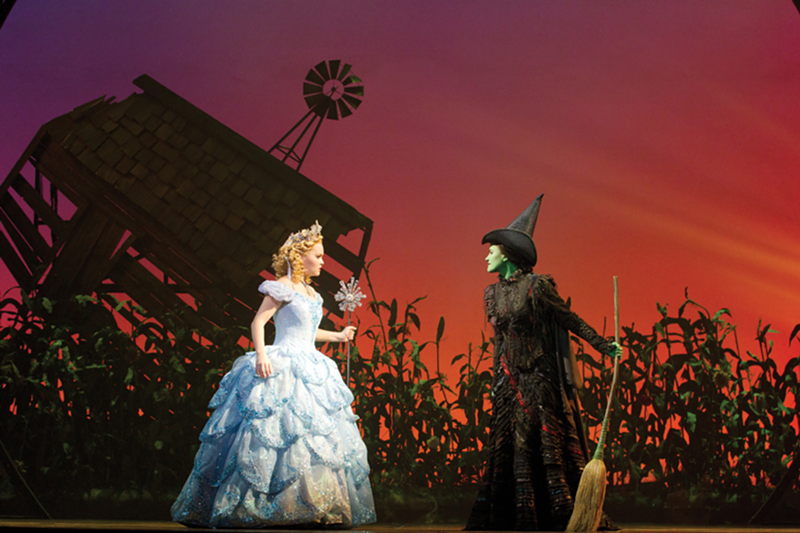Paul Simon asked that question a long time ago in his 1966 song, “The Dangling Conversation.” I suspect it’s been answered simply by the fact that I can restate it almost a half-century later. But let’s ask what needs to be the next question: Why is theater still alive? The art form began thousands of years ago, so why does it still resonate? How about some current local examples?
A touring production of Stephen Schwartz’s blockbuster musical Wicked is in town for most of November, running at the Aronoff Center for eight performances a week (see review on page 28). It opened on Broadway eight years ago, and after more than 3,300 performances it’s still going strong. It’s the backstory for the Wizard of Oz character of Elphaba, the Wicked Witch of the West, portrayed as an adolescent girl who feels like a misfit — she has green skin and she’s intelligent, but not traditionally beautiful — and how she overcomes hurdles and misunderstandings but has a lot of resistance along the way. Her rivalry with Glinda the Good (not to mention the “Popular,” to borrow the title of one of the show’s best numbers) is one that adolescent girls have flocked to see for much of the past decade. So that’s one aspect of appeal: Some theater tells stories that simply connect with common experiences that parts of the audience can relate to.
Sarah Ruhl is a young playwright whose works have grabbed a lot of attention over the past five years, especially In the Next Room, or the Vibrator Play, which is receiving its local premiere in a production by CCM’s drama program that recently opened at Covington’s Carnegie Center (see review on page XX). Ruhl’s script, which was short-listed for the 2010 Pulitzer Prize, is about what the title implies — seldom discussed sexual matters in the Victorian era. It also explores love, relationships and satisfaction — topics near and dear to most of our hearts, even if we seldom have conversations about them in a public way. So that’s another thing that theater does: It can tackle a topic that isn’t easy to discuss in everyday conversation.
Red, John Logan’s play about abstract expressionist artist Mark Rothko currently onstage at the Cincinnati Playhouse, did not last long on Broadway in 2010 (just 101 performances), but it won a boatload of awards, including the 2010 Tony for best play. It’s one of the most-produced plays in America for 2011-2012 by virtue of its exploration of big, deep ideas — philosophical notions of what makes art important and gives it meaning. Again, these are topics we might not discuss in everyday life, but that we are better for considering.
And let’s not forget about Shakespeare, whose plays are produced so frequently that American Theatre (the magazine that tracks the most-produced plays) ignores his 38 works. Already this season, Cincinnati audiences have seen a lovely staging of As You Like It at the Cincinnati Playhouse, and Cincinnati Shakespeare’s Macbeth is still creeping people out — more than four centuries after it was written. Shakespeare might have a special place in our theatrical assessment. In fact, the movie Anonymous is riling up a lot of theater lovers who have opinions about who might have really written those plays. Does it matter? Not so much, in my book: They are great works for the stage that explore big ideas, and that’s what makes for great theater.
CONTACT RICK PENDER: [email protected]


